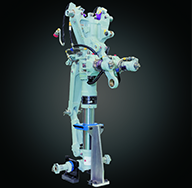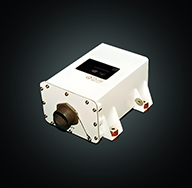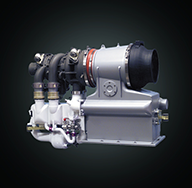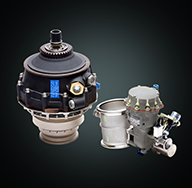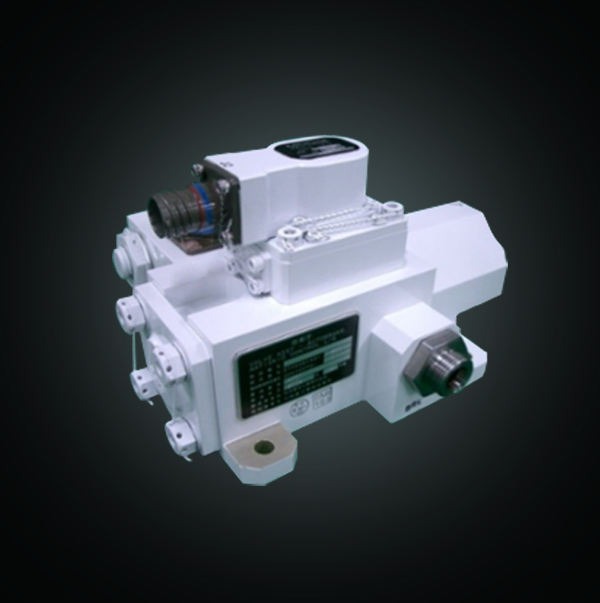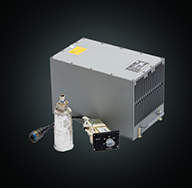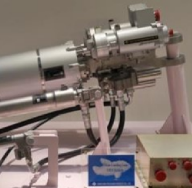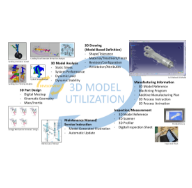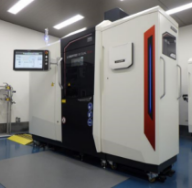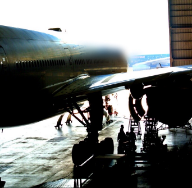Brake System Test
(1)
This test evaluates the braking performance (how short a distance it takes to stop the aircraft) of the brakes and brake control system equipped on the main landing gear wheels.
(2)
A dynamometer and tire loading device are used. The drum of the dynamometer provides the runway surface, and the rotational energy of the drum and flywheel simulates the kinetic energy that must be absorbed by the brakes (i.e., the aircraft's). The tire loading device presses the tire against the drum, causing the tire to rotate. The pressing load is controlled to match the aircraft's weight that the tire will bear after landing.
(3)
The test outline is as follows:
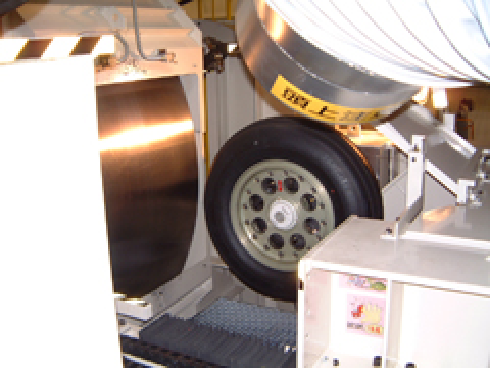
Brake Test
| 1 | With the tire wheel separated from the drum, rotate the drum until the peripheral speed reaches the test speed (the speed at which braking begins). |
| 2 | Press the tire wheel against the drum and get it ready to run. |
| 3 | The drum is switched to a free-run state, disconnected from the drive motor. A flywheel is connected to the drum to simulate the equivalent inertial mass of the aircraft, and the kinetic energy of the aircraft that should be absorbed by the brakes during landing is converted into rotational energy in the drum/flywheel and stored, simulating a taxiing condition. |
| 4 | Next, the brakes are applied and the brake control system stops the drum while controlling the skid. During this time, the tire pressing force is controlled to a value according to the deceleration speed, simulating that of the actual vehicle. |
| 5 | Braking efficiency is calculated as the ratio of the travel distance until the drum stops obtained in the test to the ideal braking distance (the calculated braking distance until the drum stops when braking with the maximum coefficient of friction between the road surface and tire without skidding), and the brake control system is tuned to bring this as close to 100% as possible. |
Contact Us
Contact Us
